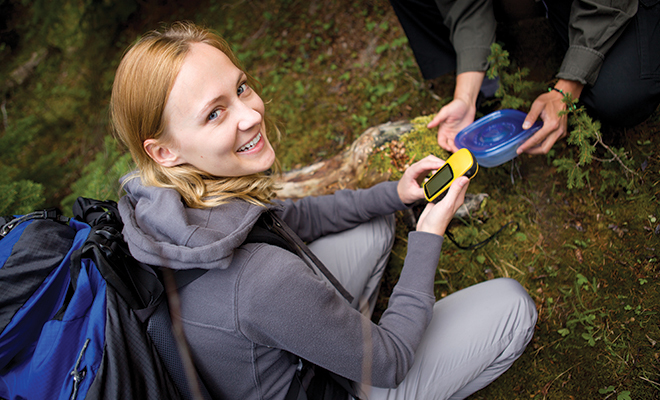
Road Travel Treasure Hunts: Geocaching and Letterboxing
Ho-hum. It’s another road trip with the kids…or a cross-country drive to see the sights or visit relatives. Why not relieve monotony, add some fun and stretch your skills with the tech-related activities of geocaching and letterboxing?
Geocaching
We love our GPS devices, don’t we? In May 2000, 24 satellites around the world received new orders that removed selective availability and gave an instant upgrade in accuracy to tens of thousands of GPS receivers. Enthusiasts of the technology were thrilled and began brainstorming new ways to use the ability to precisely pinpoint their own location or the location of items left behind for later recovery. Within a few months, computer consultants and web developers had hidden containers, posted their locations on the internet and created a new hobby that today is enjoyed by children and adults all over the world.
The name combines geo, for Earth, defining the global nature of the activity, with cache, a hiding or storage place. The original and most simple geocache is a storage container at the given coordinates that contains a logbook; larger containers may contain items for trade and trackables. Other types of caches include a multi-cache, which involves two or more locations; when you reach the first stage, there are instructions to the second stage, and so on. The final location is the physical container with a logbook. An event cache gathers local geocaching enthusiasts; its location and coordinates are provided and the event is archived when it’s concluded. A mega-event cache can involve as many as 500 people and often involves one or several days of planned activities. These events may be held annually and attract people from all over the world.
It’s easy to get started. Set up a free account on geocaching.com and visit the Hide and Seek a Cache page. Search by address or zip code, select a cache, enter the latitude and longitude into your GPS and find the cache. Smartphone users can download the free Geocaching Intro app, which provides portability, especially for a road trip. You’ll then sign the logbook and report your find online. You may also want to take photos of your find. Some caches contain treasures; if you take one you’re expected to replace it with another of equal value.
A trackable, such as a Travel Bug®, is a tag that you can attach to an item; it becomes a hitchhiker that travels from cache to cache in the real world and its progress is tracked on the website. Each Travel Bug has a unique tracking number stamped on it that’s used as proof that the item has been found; the owner gives it a task or goal, such as traveling to five countries. Enthusiasts say the fun of a Travel Bug is to invent new goals for the bug to achieve and see where it goes!
Letterboxing
Letterboxing is a unique form of treasure hunting that uses maps, compasses and clues instead of coordinates. Letterboxers hide small weatherproof boxes in publicly accessible places such as parks and post clues to finding the box online or on a website. A letterbox typically contains a logbook, a rubber stamp, often hand carved, and an ink pad. The finder imprints the letterbox’s stamp on their personal logbook and leaves an imprint of their personal stamp on the letterbox’s logbook.
The activity started in England in 1854 when a Dartmoor National Park guide left a bottle by Cranmere Pool with his calling card in it and an invitation to those who found it to add theirs. Visitors began leaving a self-addressed post card, hoping that it would be mailed by the next visitor, leading to the name “letterboxing,” the British term for a mailbox. An article in Smithsonian magazine in 1998 brought interest in the game to America.
Getting started requires a few low-tech tools. The user selects a trail name, which is their letterboxing identity and indicates something unique about them. A rubber stamp that means something personal is either hand carved or commercially made and is used to imprint the log book of each letterbox that’s found. A pen or pencil adds the trail name and date next to the stamp imprint. A sketch book is used to collect imprints from the stamps found in the letterboxes. A compass is needed, since most letterbox clues reference magnetic compass bearings.
The next step is to find clues to a letterbox near you; two sites are letterboxing.org and atlasquest.com. You can search by region, state or narrower criteria, or browse a map of the area you’ll be visiting. It’s advisable to print a trail map of the area where you’ll be hiking, and since letterboxing is intended to be an environmentally friendly activity, leave the area clean. Be respectful of the letterboxer’s effort in creating it once you find it and then return it to its hiding place.
Explore the outdoors and make a trip fun with these two activities, It’s easy to get hooked and make new friends too!. HLM
Sources: babble.com, livescience.com, milb.com, minitime.com, rd.com, travel.usnews.com and the experience of the author.







